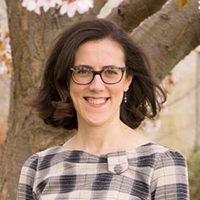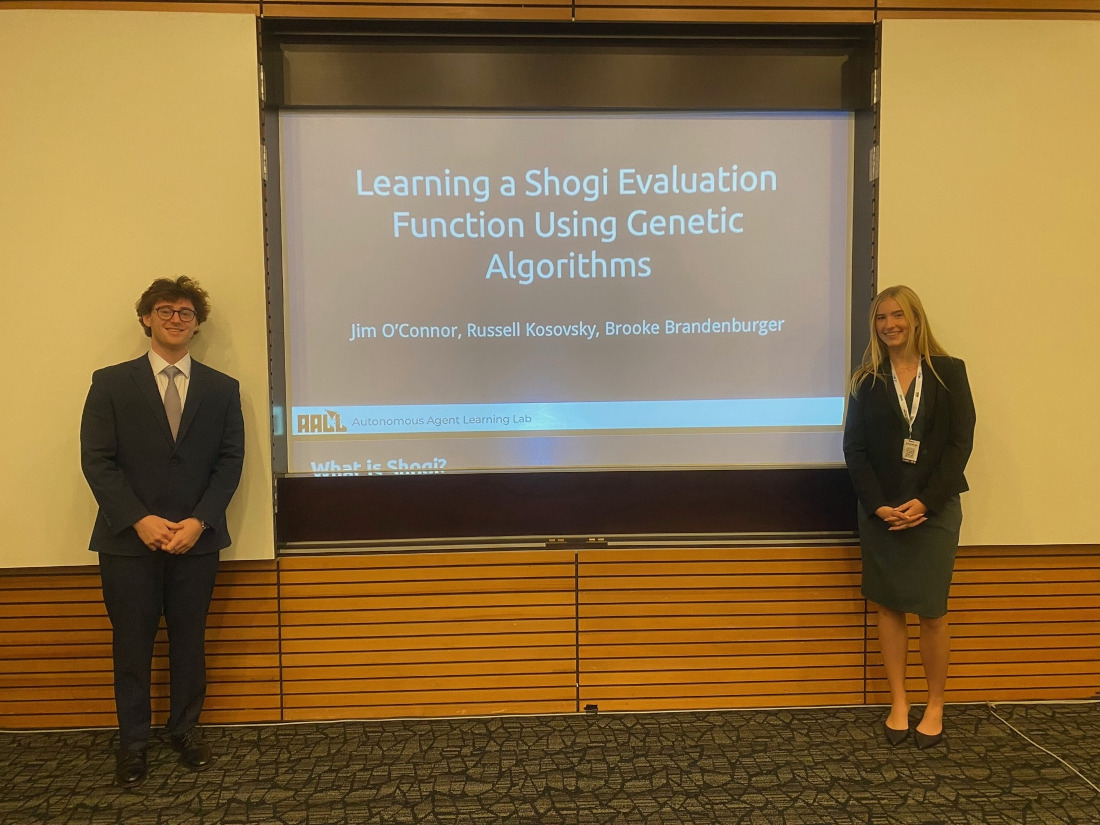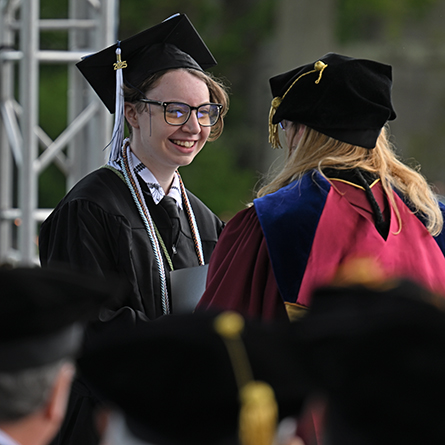
Computer science students present research at conference in Malaysia
Brooke Brandenburger ’26, Manan Isak ’24 and Russell Kosovsky ’25 recently traveled to Malaysia to present their research at the IEEE International Conference on Systems, Man, and Cybernetics. The students were advised by Professor Gary Parker and the computer science lab technician and research assistant Jim O’Connor ’13, who accompanied them on this trip.
IEEE SMC 2024, themed “Sustainable Futures: Harmonizing Humanity and Technology for a Thriving World” and held Oct. 6-10, featured topics ranging from intelligent systems to cybersecurity and robotics. The conference included keynote speeches, panel discussions, technical sessions, poster presentations and networking opportunities for attendees.
Isak, who is from Wales and is now pursuing his master’s degree in scientific computing and data analysis at Durham University in England, presented work he completed at Conn on mobile robotics titled, “Incremental Evolution of Three Degree-Of-Freedom Arachnid Gaits.” He applied previous research on the incremental evolution of gaits for hexapod robots with two degrees of freedom per leg to a more complex, eight-legged robot with three degrees of freedom per leg.
He used a cyclic genetic algorithm in the first increment to learn the activations, or pulse instructions to the servos (tiny motors), required for each leg to perform a single-leg cycle. He applied a genetic algorithm in the second increment that selected the best combination of cycles for each leg and learned the timing to coordinate each leg cycle into a single gait.

Meanwhile, Brandenburger and Kosovsky presented their joint research project, “Evolving a Shogi Evaluation Function Using Genetic Algorithms.”
At Conn’s Summer Science Research Institute poster symposium on Oct. 18, Kosovsky explained the game that his project featured to the campus community. “Shogi is often called Japanese chess; a lot of the pieces are the same and move the same. But the two main differences important here are that it's a larger board, and a player can capture a piece and put it back anywhere on the board as their own. That means the game tree expands a lot faster, so it has a higher complexity than chess.”
He and Brandenburger used a genetic algorithm trained on a dataset of professional games to learn a static evaluator for Shogi. Using the winning player as the sole learning input, the algorithm was able to predict the winner more than 70 percent of the time by examining a singular board state, or snapshot, from any point in the game. This approach can be completed in just a couple of hours on a laptop and differs from previous methods, which relied on mentor-assisted learning and exclusively self-play, according to the paper’s abstract.
Kosovsky, a computer science major and psychology minor from Northborough, Massachusetts, said the trip to Malaysia marked his first time both traveling on an airplane and leaving the U.S. He noted his Shogi project taught him a lot about how to conduct research.
“When I first started working on the project, I basically had only taken ‘Intro to Computer Science.’ I didn't really know much, so I was kind of starting with nothing. I really had no idea where it would go or that it could potentially turn into a published paper, which is amazing.”
O’Connor helped the three Camels refine and publish their work as part of his research assistant role, which is entirely funded by a gift from emeritus trustee Jean C. Tempel ’65. Tempel also funded the Department of Computer Science’s labs, which O’Connor helped design in 2011 as an artificial intelligence and robotics student working under Professor of Computer Science Gary Parker. He now helps run Parker’s artificial intelligence research lab, the Autonomous Agent Learning Lab (AALL), and serves as an in-class assistant for Parker’s AI and robotics courses.
Approximately 25 AALL student research projects are currently underway, and O’Connor predicts many of them will result in published papers. (He notes that Conn’s undergraduate publication rate in Computer Science is among the top in the world.)
“These publications are not for undergraduate research; these are internationally refereed publications,” O’Connor said. “Every time we attend a conference, our undergraduates are the only undergraduates there. The rest are third- to fifth-year Ph.D. students from places like Harvard and MIT who are all shocked that these undergraduates are there at all, never mind presenting work alongside them.”

